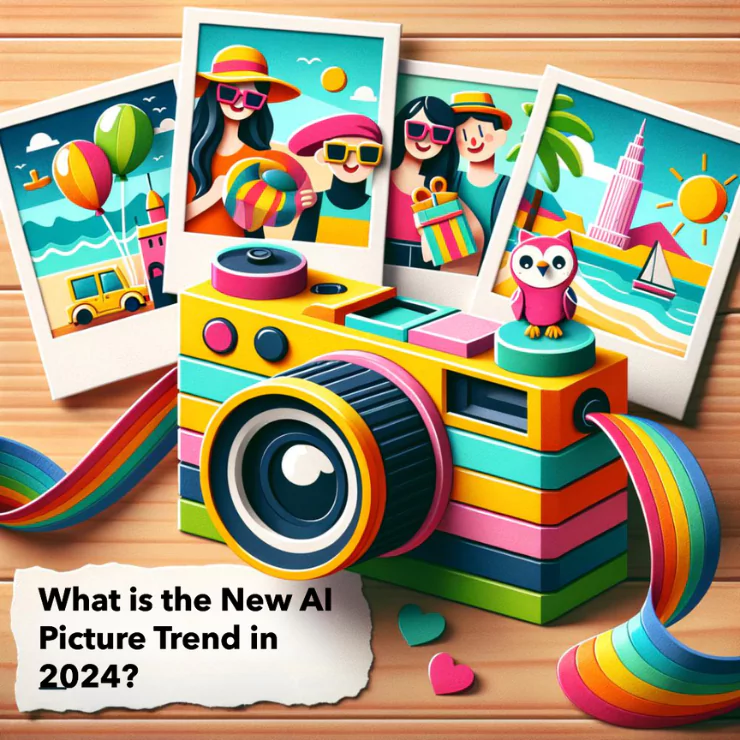We live in an era where artificial intelligence (AI) has become a prevalent force, transforming nearly every sector imaginable. One such industry experiencing this revolution is photography, particularly the realm of photo editing.
The Revolution in Digital Photography
Photography has come a long way from where it began, evolving tremendously due to the rapid advancement in technology.
The Advent of Photography
From the first-ever daguerreotype portraits, the essence of capture has been significantly modified. The processes of yesteryear were tedious and time-consuming, often requiring long exposure times.
Transition to Digital Photography
With the advent of digital photography, however, the game changed. No longer were people reliant on film or extensive development processes. Instead, images could now be instantly captured, reviewed, shared, and archived with relative ease, making the art form far more accessible.
AI’s Influence on the Photographic World
Sliding into the 21st century, another front-runner emerged in the evolution of photography: artificial intelligence.

Evolution of AI in Photography
AI first entered the realm of photography through face and pattern recognition technology. Today, it has expanded its reach to cover a multitude of aspects, from enhancing camera performance with features such as predictive focusing to changing the post-processing game.
AI and Photo Editing
Post-processing or editing is where AI has truly weaved magic. AI’s power lies in its ability to learn, improve and automate. It brings a whole new level of convenience and functionality to photographers and photo editors.
Understanding AI Photo Editor Software
As AI continues to revolutionize photography, AI-driven photo editor tools play a crucial role in this transformation. They speed up the editing process and augment the human touch.
AI Photo Editor Software: The Basics
AI Photo Editor software imbues the functionality of AI into editing, allowing for a range of automated features such as auto-enhancement, noise reduction, and perspective corrections. But these are just scratching the surface.



Key Features and Advantages
Users receive recommendations for image corrections based on the software’s analysis, reducing the guesswork. Other advanced features like object addition and removal, upscaling, style transfer, and intelligent cropping provide countless creative possibilities.
The Role of AI in Future Photo Editing
AI’s role in photo editing is set to become even more profound in the future, with developments leaning towards fully automated editing suites and personal AI photo assistant.
The Increasing Impact of AI
Machine learning algorithms will develop, and their capacity to understand user preferences and suggest appropriate edits will improve. Humans and AI will begin to collaborate more dynamically, with AI taking on a large part of the editing volume.
Dealing with AI‘s Double-Edged Nature
Despite the potential benefits, we also need to consider the ethical implications – authenticity, user data privacy, and deep fake concerns. Being double-edged, AI’s responsible use will be critical in the world of photo editing.
ZMO.AI: The Future of AI Photo Editors
Harnessing the power of AI to create accessible editing tools is at the core of startups like ZMO.AI. ZMO.AI is more than just an AI photo editor; it’s a comprehensive photo-editing tool designed to cater to both beginners and seasoned photographers.
Introduction and Features of ZMO.AI
ZMO.AI uses advanced AI models for its editing functionalities. Its AI understands the content of a photo in context and recommends modifications accordingly.
ZMO.AI’s Speciality: Magic Remove & Background Changer
ZMO.AI’s game-changer is its ‘Magic Remove’ feature. It effortlessly removes unwanted elements from a photo, a process that even skilled editors would need significant time to perfect. Its ‘Background Changer’ feature also allows users to edit the background separately or change it entirely.
Conclusion
From enhancing camera functions to revolutionizing photo editing, AI has carved a significant role for itself in the photographic world. As we move towards an increasingly digitized future, AI is set to become an essential tool for photographers worldwide.
FAQs
1. What is AI Photo Editor Software?
AI Photo Editor Software employs artificial intelligence to interpret and enhance digital images. It uses advanced algorithms to understand photo contexts and implement automated edits, significantly simplifying and accelerating the editing process.
2. What are the benefits of AI Photo Editor Software?
The benefits of AI Photo Editor Software include automated image enhancements, ease of use, improved efficiency and productivity, accessibility (no need for professional editing knowledge), and augmented creativity.
3. What are the key features of ZMO.AI?
ZMO.AI shines with features such as AI models that understand image content, a ‘Magic Remove’ function that eliminates undesired elements quickly and easily, and a ‘Background Changer’ that allows users to alter image backdrops seamlessly.
4. How is AI changing the future of photo editing?
AI’s impact on photo editing is significant, automating and augmenting traditional editing tasks like color correction, object removal, and background changes. AI will continue to become smarter, making anticipatory adjustments based on user behavior and preferences. It is also moving towards being fully integrated into photography, offering on-the-fly adjustments during the photo-taking process itself.
5. What are the potential ethical implications of using AI in photo editing?
While AI promises to elevate photo editing, it also poses potential ethical challenges. These include the risk of over-editing, leading to a loss of authenticity in the original photograph; privacy concerns regarding data used to train AI algorithms; and the production of deep fakes, which can potentially spread misinformation. Balancing these challenges with AI’s potential benefits will be essential.




